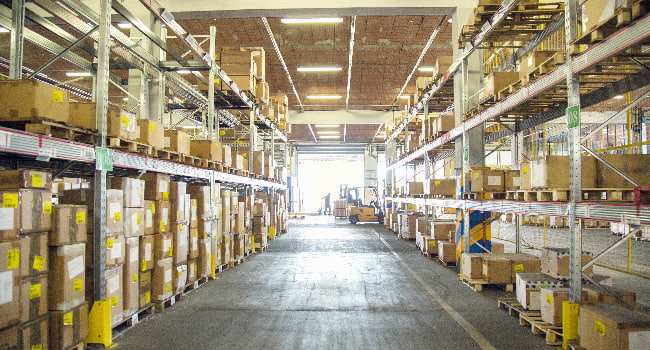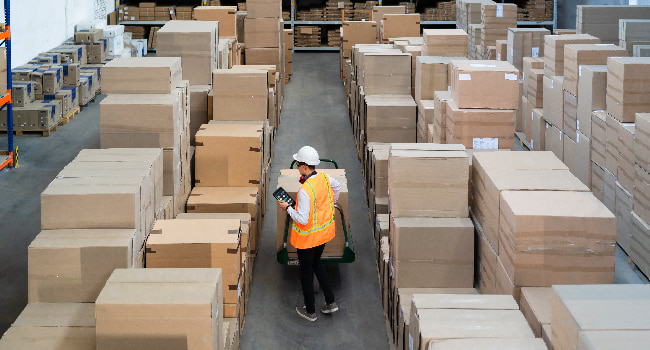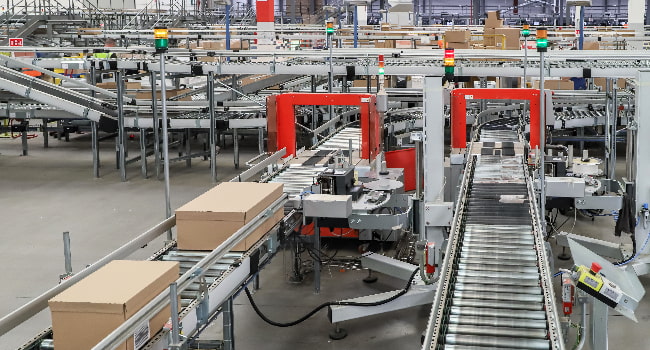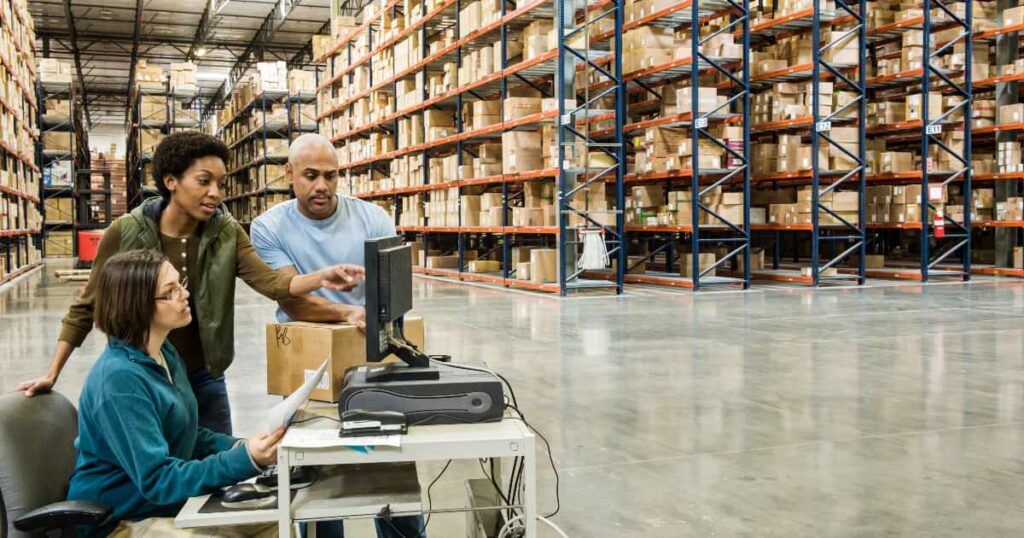A1 Quality Logistical Solutions
Key Highlights
- Fulfillment centers help make the order fulfillment process easier for ecommerce businesses.
- They provide various services like receiving, storing, picking, packing, and shipping products. They also handle returns.
- Working with a fulfillment center can help businesses save money, work more efficiently, and boost customer satisfaction.
- When choosing a fulfillment center, important factors to consider are location, technology, pricing, and extra services.
- The fulfillment industry is always changing. New trends like automation, sustainability, and data analytics are influencing the future of order fulfillment.
Introduction
Fulfillment centers serve as places where ecommerce businesses can keep their products and handle online orders quickly. This blog post will look closely at fulfillment centers. We will discuss why they matter, how they work, and the advantages they bring to businesses, no matter their size.
Understanding Fulfillment Centers and Their Role in Ecommerce
For ecommerce businesses, especially those growing fast, managing order fulfillment on their own can be too much. This is why fulfillment centers are very important in the ecommerce world. These centers take care of the whole order fulfillment process. This includes everything from when a customer places an order to when it arrives at their home. By using fulfillment centers, ecommerce companies can make their logistics smoother, save money, and focus on key tasks like product development and marketing.
Fulfillment centers are primarily beneficial for businesses that get a lot of orders. They have the setup and know-how to manage large-scale operations well. By using a fulfillment center, businesses can make sure orders are processed on time. They also help with accurate inventory management and dependable shipping. This all leads to better customer satisfaction.

The Basic Functions of a Fulfillment Center
To understand the importance of fulfillment centers, we need to look at what they do in the order fulfillment process. Here are their main tasks:
- Receiving and Storage: When products come into a fulfillment center from makers or suppliers, the team checks, sorts, and puts them away in an organized way. This keeps items easy to find for order picking. Fulfillment centers have large warehouses that offer plenty of storage space for all kinds of products.
- Order Processing and Picking: When a customer makes an order online, the fulfillment center gets a notification. Their warehouse management system creates pick lists. These lists help staff find and gather the items that have been ordered.
- Packing and Shipping: After picking the products, the items go to the packing area. Here, trained workers carefully pack the goods to keep them safe during shipping. They use the right materials like boxes, bubble wrap, or packing peanuts to protect the items. The packages then get labels with shipping addresses and other important information.
How Fulfillment Centers Enhance Ecommerce Operations
Using a fulfillment center can be a smart choice for ecommerce businesses that want to improve their operations and make customers happier. Here are some important ways fulfillment centers help ecommerce businesses:
- Efficient Order Processing and Lower Shipping Costs: Fulfillment centers automate many parts of order fulfillment. They also work closely with shipping companies. This helps businesses process orders quickly and find good shipping rates.
- Better Inventory Management and Growth Potential: Fulfillment centers have advanced inventory systems. This lets businesses keep track of their inventory levels accurately. It helps avoid running out of stock and makes the best use of storage space, allowing for easy growth.
- More Focus on What Matters and Better Customer Service: When companies outsource order fulfillment to experts, they save time and resources. This helps them focus on what they do best, like product development, marketing, and customer service. In turn, this can lead to more business growth.
Comparing Fulfillment Centers to Traditional Warehouses
While the words “fulfillment center” and “traditional warehouse” are often treated the same, they actually have important differences. Knowing these differences matters when you choose the best logistics solution for your business.
A traditional warehouse is mainly for storing goods over a long time. It usually has less frequent shipments, focusing on keeping inventory until needed. On the other hand, a fulfillment center is a busy place. It quickly and efficiently handles customer orders.

Key Differences in Operations and Storage
One key difference is how these facilities operate. Both offer physical space for storing inventory. However, a fulfillment center does more than just hold goods. It focuses on quick order fulfillment which includes picking, packing, and shipping directly to customers. The level of activity affects how they are set up, their technology, and how many staff they have.
Traditional warehouses are all about using space to store large amounts of goods for a long time. Their layout supports storing items on pallets and shipping large quantities, which isn’t ideal for individual orders. In contrast, fulfillment centers aim for efficiency in the fulfillment process. They are designed for quick access to different products, efficient picking paths, and easy packing stations.
The Impact on Efficiency and Cost
The differences in operations have a big effect on efficiency and cost. Fulfillment centers focus on fast order fulfillment. They use technology and automation to improve warehouse management. Advanced warehouse management systems (WMS) help track inventory levels, simplify picking routes, and automate order processing. These tech improvements lead to quicker turnaround times and fewer errors, which help lower operating costs.
Fulfillment centers can also save money because they deal with many clients. They can get better shipping rates and cheaper packaging by buying in bulk. This gives cost savings to the businesses they work with. On the other hand, traditional warehouses work at a slower pace. They have less advanced technology and may not be as efficient. This affects cost savings, especially for businesses that get many online orders.
The Inner Workings of Fulfillment Centers
To understand how fulfillment centers work, let’s take a closer look at what they do and how they operate.
Fulfillment centers are well-organized places. Here, technology, buildings, and trained workers come together. They all work as a team to make sure that customer orders are delivered correctly and on time.

Order Processing and Management Flow
The way orders are processed and managed is very important for a good fulfillment center. It all starts when a customer makes an online order. The ecommerce platform sends the order details to the center’s order management system. This system collects orders from different sales channels. It gives a clear view of all pending orders.
Then, the order management system checks available inventory. It sets aside the needed stock for each order. After that, the system makes picking instructions. These are given to warehouse staff based on where they are and their current workload. During this whole process, businesses can keep track of orders in real-time and see everything clearly.
Inventory Management Techniques
Effective inventory management is very important for smooth order fulfillment. Fulfillment centers often use advanced inventory management systems (IMS). These systems help keep stock levels accurate, lower carrying costs, and avoid running out of stock.
These systems use different techniques to manage inventory, such as:
- Just-in-Time (JIT) Inventory: This method reduces holding costs by getting goods from suppliers only when they are needed for immediate orders.
- First-In, First-Out (FIFO): This approach ships out older products first. This helps reduce the chance of products going out of date.
- Demand Forecasting: By checking past sales data and market trends, fulfillment centers can guess future demand and change inventory levels as needed.
Having accurate inventory data helps in quick order fulfillment. It is also a key part of supply chain management. This way, goods can flow smoothly and issues can be kept to a minimum.
Pick, Pack, and Ship Processes Explained
The “pick, pack, and ship” process is very important in fulfillment operations. This process means getting ordered items from storage, packing them for shipping, and sending them to customers on time. Let’s break down each step:
- Order Picking: Staff get picking instructions via handheld devices or paper lists. These instructions help them find the right storage spots for the items. It is very important to be accurate while picking to avoid mistakes when shipping and to keep customers happy.
- Packing: After picking the items, they go to packing stations. Here, workers pack the products carefully to keep them safe during shipping. They choose the right packing materials, like boxes, envelopes, bubble wrap, or air pillows, based on how fragile the items are and their size.
- Shipping: Once packing is done, the labeled packages move to the shipping area. Here, they are sorted and readied for pickup by different shipping carriers. Fulfillment centers often work with several carriers to give customers many shipping choices, like standard, expedited, and overnight delivery.
Advantages of Using Fulfillment Centers for Businesses
Using fulfillment centers has many benefits for online retail businesses. These benefits include:
By taking advantage of the knowledge and setup of fulfillment centers, businesses can simplify their shipping processes, lower costs, and improve their overall efficiency.

Streamlining Ecommerce Operations
One of the main benefits of working with a fulfillment center is that it helps to simplify your ecommerce operations. By letting experts handle these tasks, businesses can save time and resources. This allows them to focus on important parts of their business, such as:
- Product Development: Spending more time and energy on creating new and high-quality products for your target market.
- Marketing and Sales: Running strong marketing campaigns to attract more visitors to your online store and increase sales.
Customer Relationship Management: Offering great customer service and building strong connections with your customers to encourage loyalty.
Reducing Overhead Costs and Improving Profit Margins
Managing fulfillment in-house can bring high expenses. These include costs for warehouse rent, utilities, equipment, employee pay, and insurance. When businesses use fulfillment services, they change fixed costs into variable costs. They only pay for storage space, labor, and shipping when they are fulfilling orders.
This can result in good cost savings, especially during slow sales times when in-house work would leave resources sitting unused. Plus, fulfillment centers usually get lower shipping rates because they ship a lot. They can pass these savings to their clients, which helps profit margins even more.
Enhancing Customer Satisfaction with Faster Delivery Times
Faster and reliable shipping plays a big role in making customers satisfied. Fulfillment centers are placed close to big shipping points. They often work with different carriers to provide various shipping choices, like quick and overnight delivery.
When businesses speed up delivery times, they can improve customer satisfaction. This also helps to lower the chances of customers leaving their carts and builds brand loyalty. In addition, fulfillment centers usually have teams for customer service. These teams manage delivery questions and fix any shipping problems quickly, which helps create a good customer experience.
Choosing the Right Fulfillment Partner for Your Business
Choosing the right partner for fulfillment is very important for your business. It can greatly affect how you operate and how happy your customers are.
You need to think about many things like where they are located, what technology they use, and how much they charge. It is important to look closely at possible fulfillment partners. This way, you can make sure they fit your business needs and goals for the future.

Key Factors to Consider When Selecting a Fulfillment Center
You should think about different factors to make sure they fit your business needs:
- Location: Where the fulfillment center is can affect how fast you ship and what it costs. Pick a fulfillment provider that has warehouses close to your customers. This can help you deliver quickly and spend less on transportation.
- Technology and Integrations: You need your ecommerce platform to work well with the fulfillment provider’s systems. This is important for automating order processing, inventory management, and tracking shipments. Look for a provider that connects easily with popular ecommerce platforms and gives you real-time updates on your inventory and orders.
- Experience and Expertise: Think about how much experience the fulfillment provider has with products like yours. Some providers focus on certain types of products, like fragile items or food. Choosing a provider with the right knowledge means your products will be stored, handled, and shipped correctly.
Evaluating Technology and Integration Capabilities
When looking for fulfillment partners, it is essential to check their technology skills and how well they can integrate with your system.
A strong Warehouse Management System (WMS) is key for running efficient fulfillment operations. A good WMS should provide real-time inventory tracking, automatic order processing, barcode scanning, and improved picking and packing methods.
Also, it is important that the fulfillment provider’s WMS works well with your ecommerce platform. This helps to automate the order flow, keep inventory in sync, and send shipment notifications. Integrations with popular shipping companies can automate the creation of shipping labels, compare rates, and track shipments.
Understanding Pricing Models and Contracts
- Receiving Fees: Costs for getting and processing your items at the fulfillment center.
- Storage Fees: Charges for keeping your items based on how much space they take and how long they are stored.
- Pick and Pack Fees: Charges for selecting and packing individual orders.
- Shipping Fees: Costs to send orders to your customers, which can change based on where they are going, their weight, and how fast they are shipped.
Take a close look at the pricing model to see if it fits with your order amounts and shipping habits. Get quotes from different providers to compare prices and negotiate better terms. Also, check the contract details, like minimum order amounts, the length of the contract, and conditions for ending it.
Trends and Innovations in Fulfillment Center Operations
The fulfillment industry is always changing. It needs to meet the new likes of customers, use the latest technology, and handle a more complex supply chain.
Many new ideas and trends are forming the future of fulfillment centers. These include automation, robotics, being more sustainable, and using data analytics.

The Rise of Automation and Robotics in Fulfillment
Automation and robotics help make work faster, more precise, and efficient.
Automated guided vehicles (AGVs) can move around the center by themselves. They carry inventory between storage spots, picking areas, and packing lines.
Robotic arms with smart vision systems can pick and place items exactly where they need to go. This boosts the speed and accuracy of order fulfillment.
Automated storage and retrieval systems (AS/RS) help save space in warehouses. They store and get back inventory in a vertical way, which makes the best use of the available space.
Implementing Sustainable Practices in Fulfillment Operations
As people worry more about the environment, using sustainable practices is now a must for all businesses, including ecommerce fulfillment. Sustainable fulfillment helps limit the harm done to the planet at every stage of the supply chain, from how products are sourced and packaged to shipping and returns.
Fulfillment centers are doing different things to be more sustainable. They use recycled and biodegradable packaging materials. They also plan shipping routes better to cut down on carbon emissions. Plus, they are switching to energy-efficient lighting and temperature control in their buildings.
Sustainable packaging includes using recycled cardboard boxes, padded mailers from recycled plastics, and packing peanuts that are biodegradable and made from plants. By picking eco-friendly packaging choices, businesses help the environment and attract customers who care about sustainability.
Leveraging Data Analytics for Improved Efficiency
Fulfillment centers collect a lot of data from different sources, like inventory levels, order patterns, shipping times, and customer feedback.
By analyzing this data, businesses can find helpful insights that lead to better operational efficiency, improved inventory levels, and higher customer satisfaction. Data analytics helps spot trends in order volume. This allows businesses to predict busy times and adjust staff levels. This way, they can ensure timely order fulfillment, even during busy seasons.
Conclusion
Fulfillment centers are very important for e-commerce businesses. They help with order processing and make customers happy by providing faster deliveries. These centers simplify tasks and help reduce costs. When businesses pick the right fulfillment partner, they can boost efficiency and profits. Using technology, automation, and eco-friendly practices in fulfillment operations keeps things fresh and helps growth. To compete well in e-commerce, it’s essential to know how fulfillment centers work and what benefits they bring. Make smart choices to improve your supply chain and enhance customer satisfaction.
Frequently Asked Questions
What Makes a Fulfillment Center Different From a Warehouse?
A fulfillment center is a type of storage space, similar to a warehouse. However, its main job is to fulfill orders. They focus on managing inventory, processing orders, and shipping directly to customers. Their goal is to do this quickly and efficiently.
How Can Small Businesses Benefit From Using a Fulfillment Center?
Small businesses can do really well with fulfillment services. These services give them affordable storage and make order processing easier. They might even help lower shipping costs. This means small businesses can compete better with larger ones. They can offer good customer satisfaction and better delivery times.
How Do Fulfillment Centers Handle Returns?
Fulfillment centers help with returns for ecommerce merchants. They take care of the whole returns process. This includes getting back items, checking their condition, restocking them if needed, and managing refunds or exchanges. Good returns management is important for customer satisfaction. It can fit easily into the order fulfillment process.
Can Fulfillment Centers Ship Internationally?
Yes, many fulfillment centers provide international shipping. They often work with major carriers to help with deliveries around the world. These centers can manage customs paperwork, import/export rules, and give different delivery options for international customers. Picking a fulfillment center that knows about international shipping can make it easier for ecommerce businesses to grow globally.

Haley serves as the Marketing Manager for A1 Quality Logistical Solutions. She joined A1QLS in 2023 with her prior experience gained with GXO and XPO Logistics.

